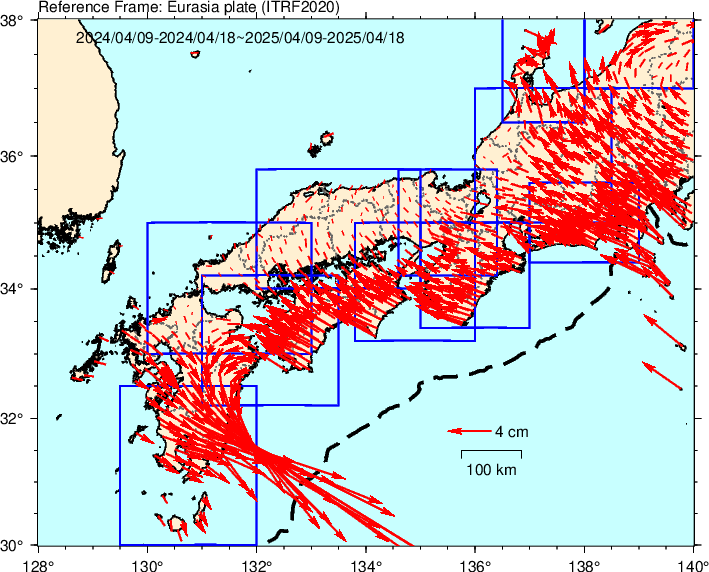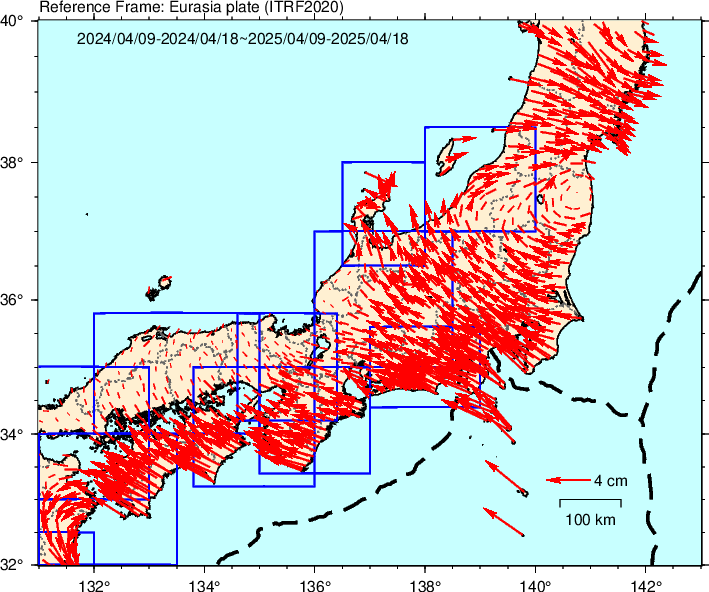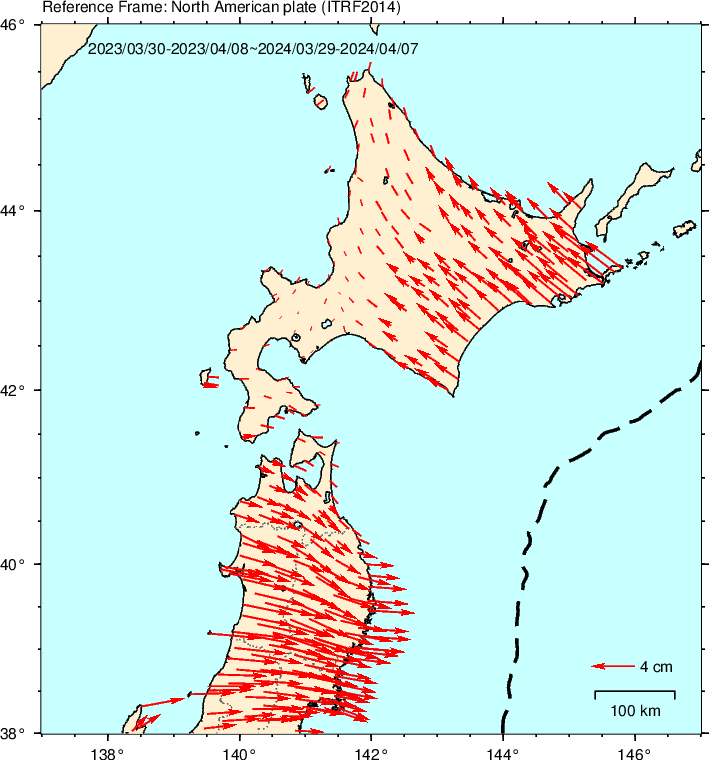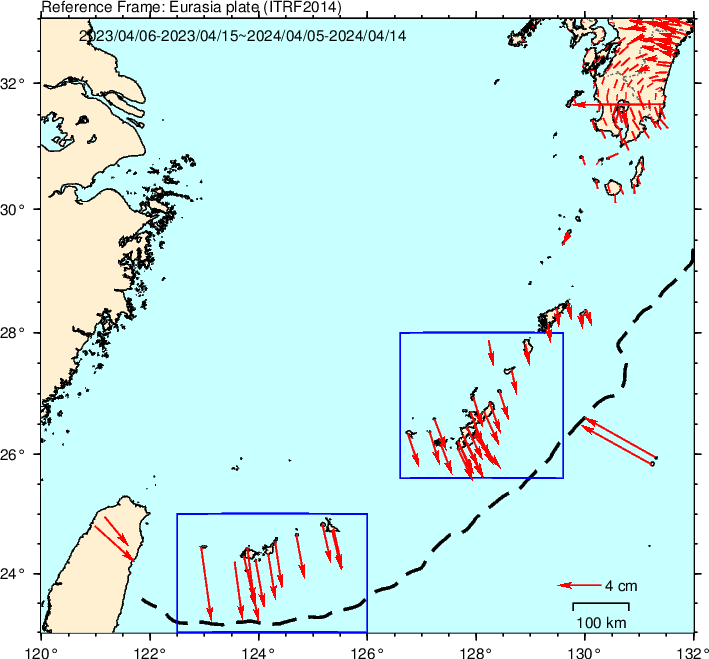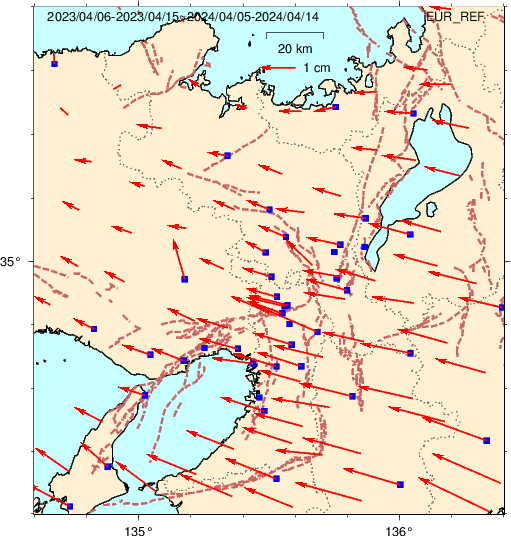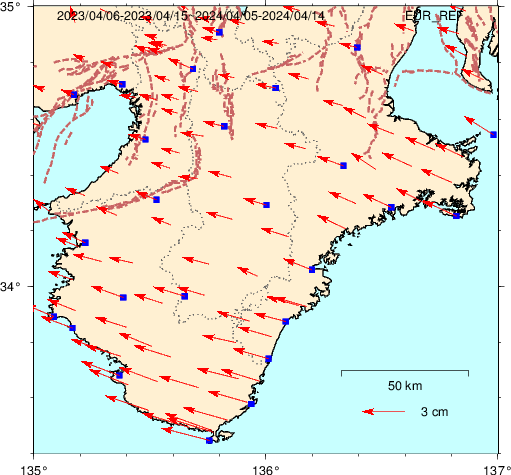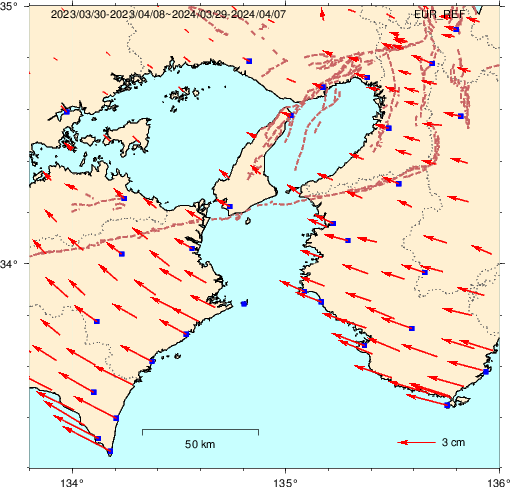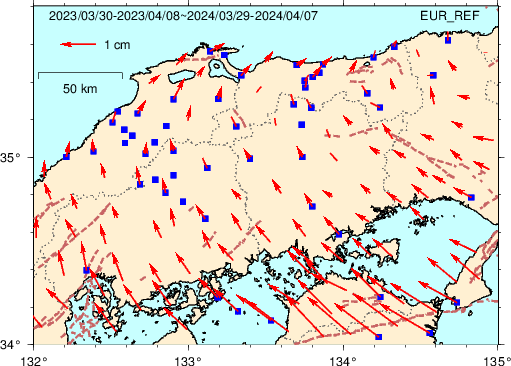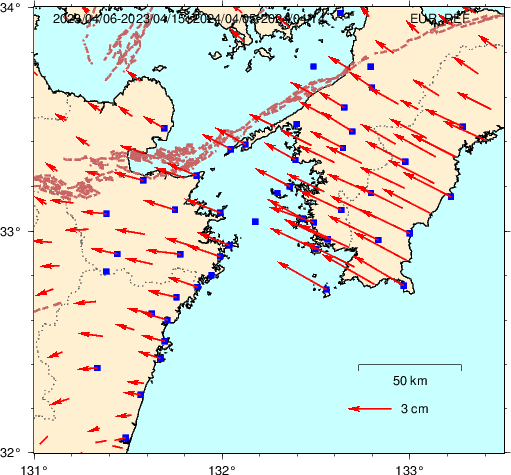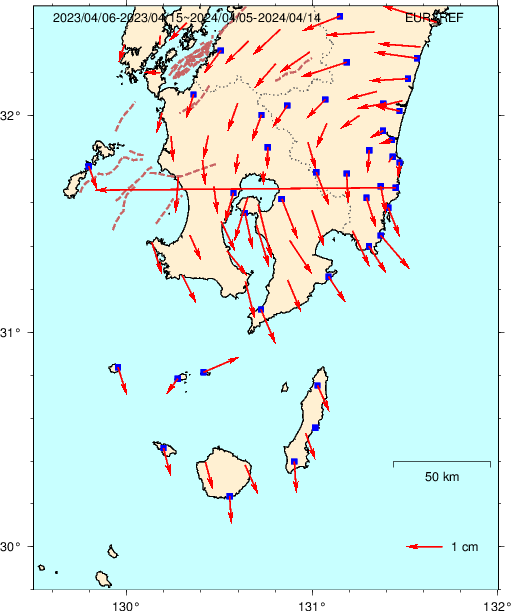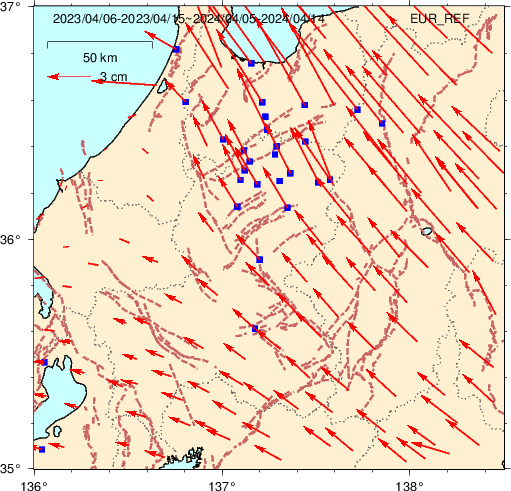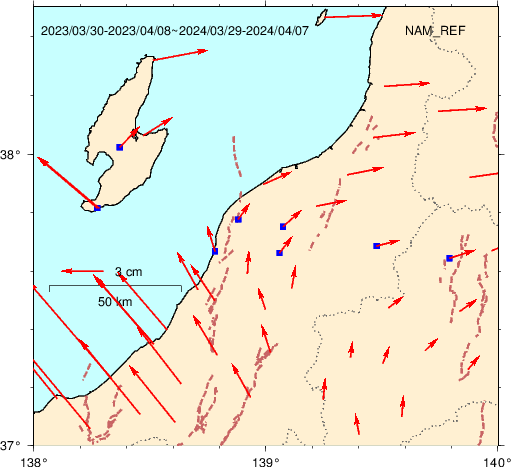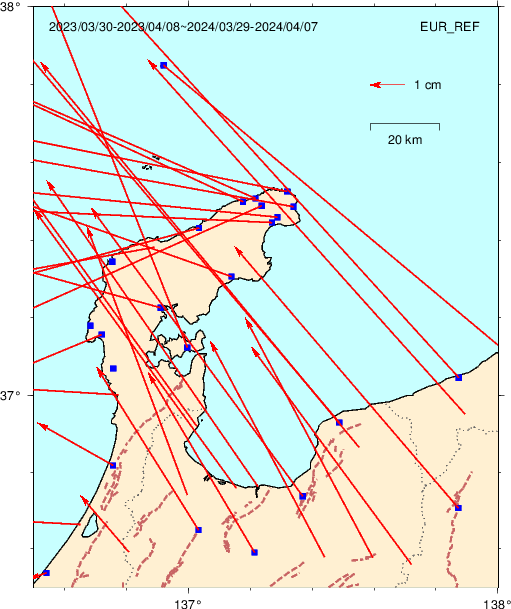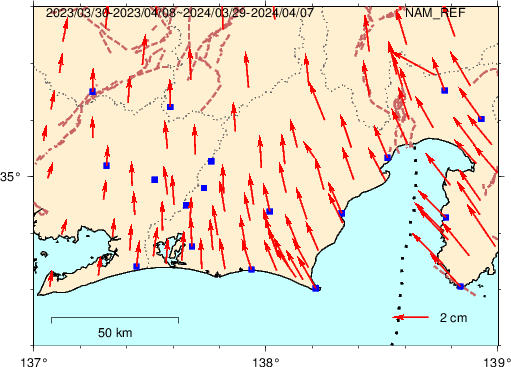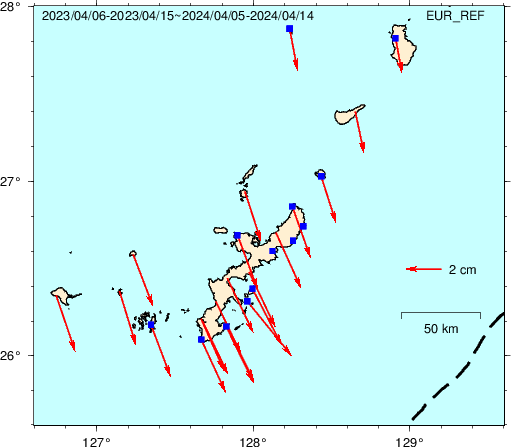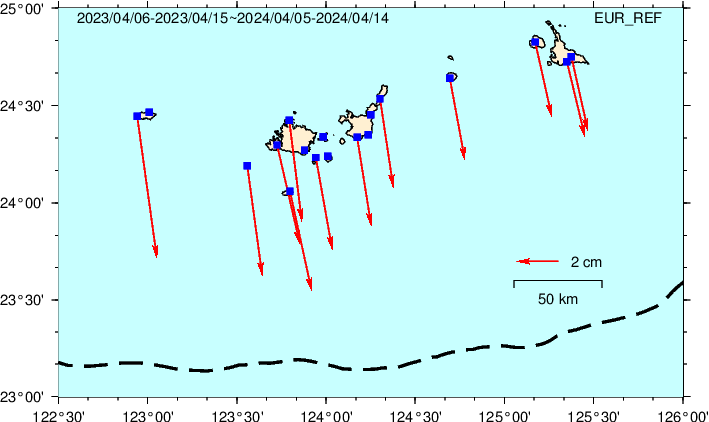|
Above figures are results of daily coordinates estimated using GipsyX 2.3 software with the PPP+AR strategy and RINEX data for GNSS stations of DPRI of Kyoto Univ., Nagoya Univ., Kyushu Univ., Goespatial Information Authority of Japan, Japan Coast Guard, JAXA, Kyoto City Archaeological Research Institute, Geo-Research Institute, Korean GNSS Integrated Data Center and IGS (International GNSS Service). The figures are to be updated every Saturday, using data aqcruired about two weeks ago.
Acknowledgement: We used data of GEONET (Geosptial Information Authority of Japan; GSI), DGPS (Japan Coast Guard; JCG), and private control points (Kyushu Electoric Company) for plotting figures. We thank GSI and JCG for maitaining these valuable networks. GNSS sites operated by the univesities are funded by the Grant-in-Aid for Scientific Research, Kyoto University DPRI Collborative Research, the MEXT Earthquake and Volcano Hazards Observation and Research Program. We also thank Mr. Kengo Miyahara for providing GNSS data.
|
|
|
このページは,京都大学防災研究所,名古屋大学,九州大学,神戸大学,国土地理院,海上保安庁,JAXA, 韓国GNSS統合データセンター及びIGS(国際GNSSサービス),京都市埋蔵文化財研究所,(一財)地域地盤環境研究所のGNSS観測点のデータを示したものです.データ解析には,GipsyX 2.3(PPP+AR)ソフトウェアを用い,日座標値を算出しています.最新のプロットは,約2週間前のデータを用いて作成しています.本ページは毎週日曜日午前11時頃に更新する予定です.
謝辞 本ページの図には,国土地理院GEONET,海上保安庁DGPS,民間電子基準点(九州電力)のデータを使用しています.日頃から観測網を維持管理して頂いている両機関に感謝いたします.また,大学が設置した観測点は,科学研究費補助金,京都大学防災研究所共同利用などの経費で設置され,文部科学省による「災害の軽減に貢献するための地震火山観測研究計画」などの経費で保守を行っています.京都市埋蔵文化財研究所宮原健吾様にはGNSSデータの提供に際して大変お世話になりました.ここに記して感謝いたします.
|
|
|

